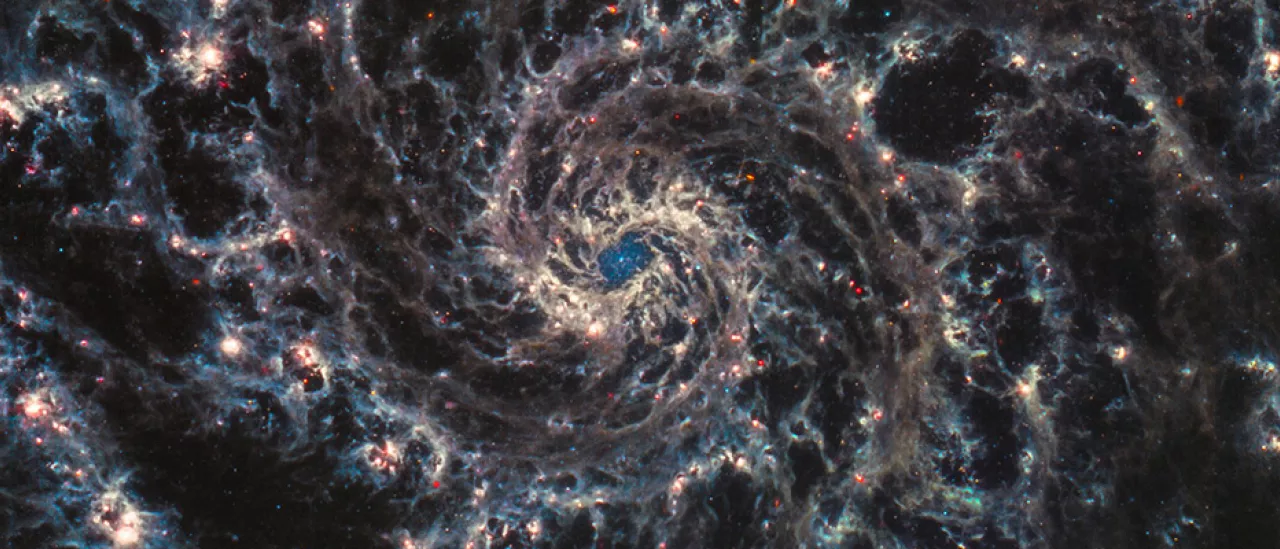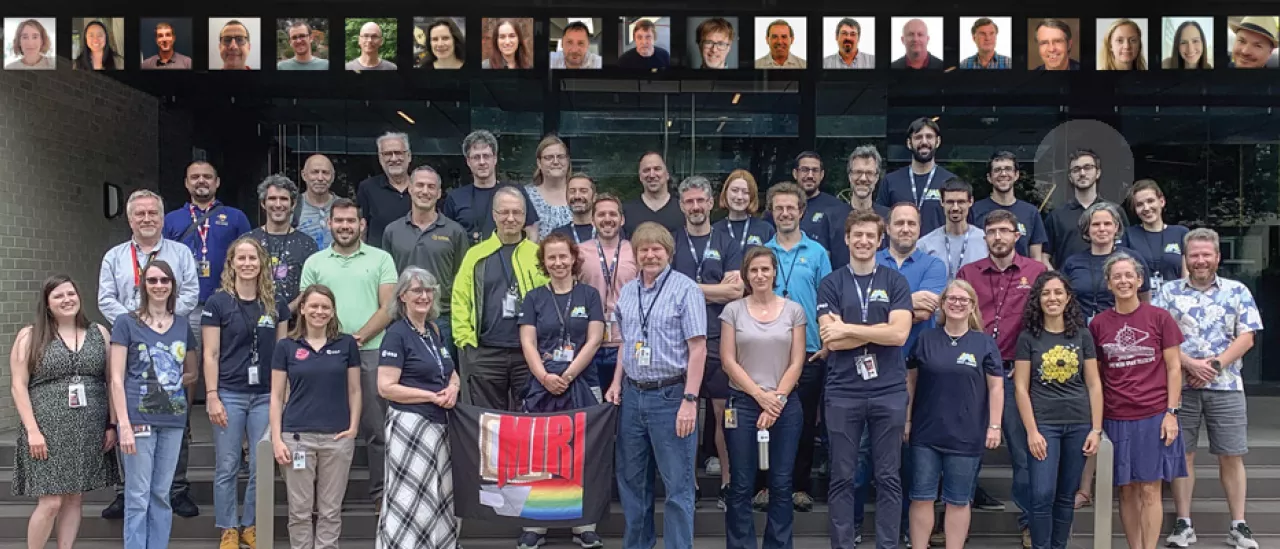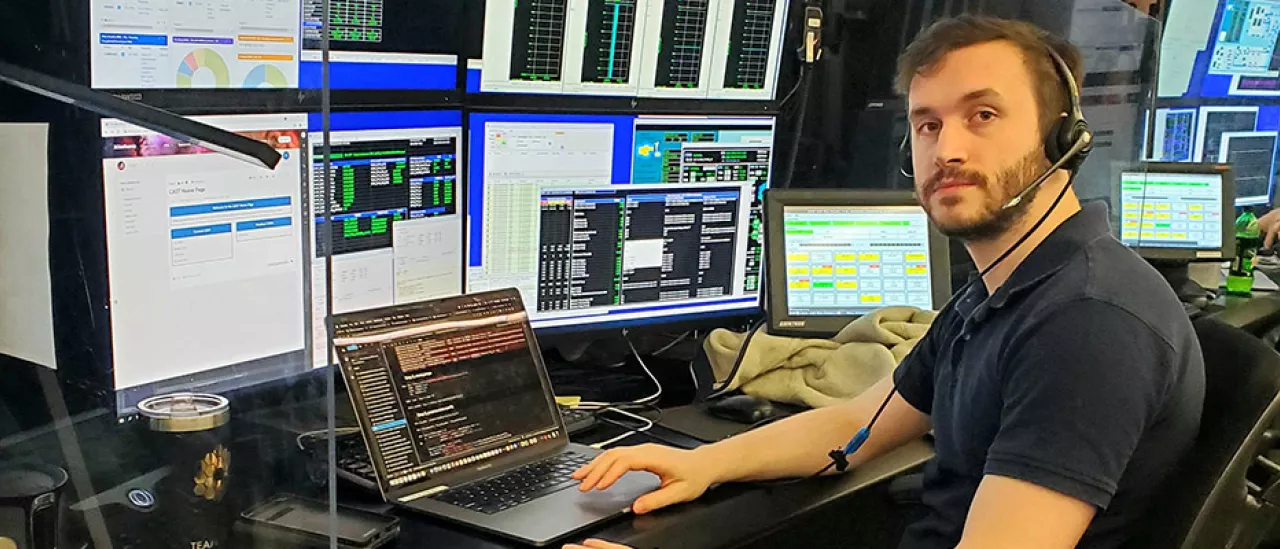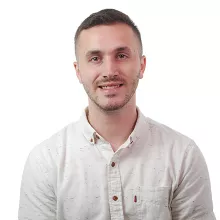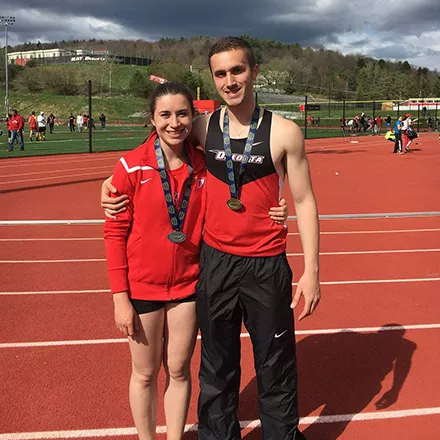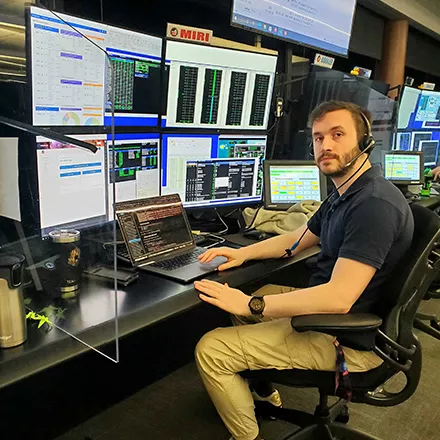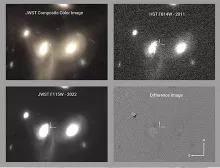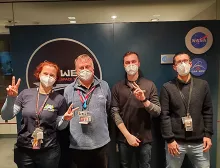The first images from NASA’s new $10 billion James Webb Space Telescope have captivated the world, offering the deepest and sharpest images of the cosmos ever captured and allowing us to see farther into the universe, in both time and distance, than ever before. And a recent graduate of SUNY Oneonta helped to make it happen.
Mike Engesser, Class of 2017, is a staff scientist working on the MIRI instrument of the telescope at the Space Telescope Science Institute in Baltimore, Md. Seated at a desk behind seven giant computer screens “just like the movies,” Engesser – who double-majored in physics and computer science at SUNY Oneonta– takes data received from the telescope, calibrates it and analyzes it so that it’s ready for science operations. His team discovered a supernova, or exploding star, that had previously never been seen, and Engesser received credit as author.
“It’s all a little bit surreal,” he said. “I grew up learning about the Hubble Telescope and hearing about Webb, and then learning about Webb as an astronomy student with Dr. Josh Nollenberg at Oneonta. We knew Webb was coming because it has been in the works since before I was born. So it’s surreal to actually be a part of the project now and be around all the people who have been with it since its inception.”
Engesser joined the Space Telescope Science Institute and Webb project three years ago after earning a master’s degree in astronomy from San Diego State University. Knowing that the launch of the James Webb Telescope was coming very soon, he and his team have spent the past few years preparing for this moment.
It’s a dream come true for a guy who spent his childhood in Medford, NY, looking up at the stars, learning about space with his dad, and watching the 1998 science fiction hit "Armageddon" over and over again, "as embarrassing as that is to admit working in the astronomy world,” he said with a laugh.
“From my youngest memories, I was always interested in space,” Engesser said. “And this is such a fascinating time to be working in this field.”
At SUNY Oneonta, Engesser honed his skills alongside Associate Professor Joshua Nollenberg, giving observatory shows at College Camp and inside the college’s planetarium. He was also a member of the track and field team and worked as lead desktop consultant with Information Technology Services (ITS).
“I had a rich college experience,” Engesser said. “I loved doing the observatory shows at College Camp and had great experiences with track, going to nationals and getting close with my coaches, who always stressed that academics were first.”
What sticks out the most, he said, is the mentoring he received from Dr. Nollenberg.
“He gave me invaluable advice about how to do research, how to be a part of the industry, and how to leverage my skills in computer science in the field of astronomy,” Engesser said. “That really helped me get where I am today.”
Engesser is excited to see what the future holds.
“There’s so much to do with Webb at the moment, and it’s all very exciting,” he said. “I’ll be starting to write papers, maybe looking to get my PhD. Webb has opened up a whole new realm of transient supernova science, and I’m ecstatic to be part of it.”
